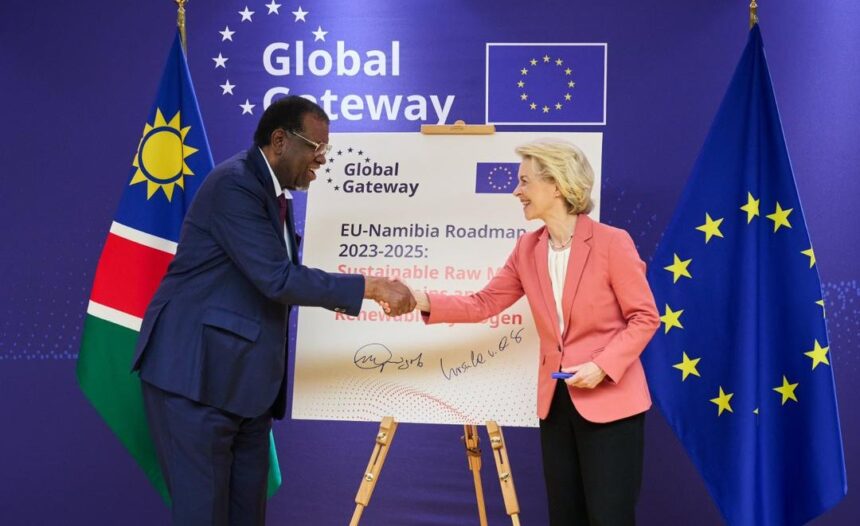The European Union (EU) has pledged a significant N$20 billion investment in Namibia’s green hydrogen and raw materials sector.
This commitment was announced by EU Commission president Ursula von der Leyen during the EU-Namibia business forum on Wednesday in Brussels, Belgium.
Highlighting Namibia’s vast potential in renewable energy, Von der Leyen described the country as a leader in the green hydrogen domain.
“The EU is proud to be a partner in this transformative journey towards green industrialisation. Together we can further decarbonise our economies, create jobs and ensure a more prosperous and greener future for our societies,” Von der Leyen said.
Speaking at the announcement of the partnership, president Hage Geingob acknowledged the country’s exceptional renewable energy resources as the foundation for establishing a sustainable and influential green industrial sector.
“Namibia is also cognisant that to fully capture the opportunity at hand, we will have to mobilise fit for purpose capital that appropriately prices risk in order to optimise the cost of said capital. This is a key element that will form the cornerstone of this transformative partnership with the EU,” Geingob said.
This partnership follows the agreement inked between Namibia and the EU in November 2022, establishing a strategic partnership focused on sustainable raw materials value chains and renewable hydrogen.
The operational roadmap unveiled for the period spanning 2023 to 2025 outlines the concrete actions that both parties will undertake in close cooperation with financial and private sector stakeholders from the EU and Namibia to advance their shared goals.
Additionally, the EU has also promised to back an upcoming study for the expansion of the Port of Walvis Bay into a strategic industrial and logistics hub, contributing to regional integration and economic growth.
This port, located on the Atlantic coast and serving as the entry point to the Walvis Bay-Maputo Corridor, is one of the 11 strategic corridors identified by the EU for support within the EU-Africa Global Gateway Investment Package.
Its strategic location positions it as a natural gateway for international trade, particularly to the Southern African Development Community, a region inhabited by over 300 million people.
With the backing of the EU, the Port of Antwerp and Bruges International will undertake the development of a comprehensive master plan. This master plan will encompass various aspects, including multimodal infrastructure, spatial planning and market organisation for the Port of Walvis Bay.
According to the EU, the ultimate aim is to facilitate its transformation into a regional hub for logistics and industry within the green hydrogen and derivatives sector.
Jutta Urpilainen, EU commissioner for international partnerships, said the expansion of the Port of Walvis Bay to cater for the development of the emerging green hydrogen industry is a demonstration of mutually beneficial Global Gateway cooperation.
“We are strengthening sustainable value chains and strategic transport corridors in Africa and delivering on the green and digital transitions in both Namibia and the EU,” Urpilainen said.
Urpilainen said the roadmap adopted on Wednesday gives Team Europe members the framework to identify projects with high potential, mobilise investments and boost skills training along the renewable hydrogen and raw materials value chains.



Leave a Reply